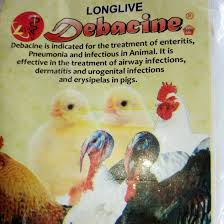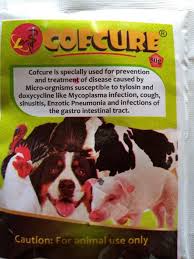Your cart is currently empty!
pox formular 50g
Fowl pox is a slow-spreading viral disease of chickens characterized by lesions on the unfeathered skin areas (dry pox) and/or on the mucous membranes of the oral cavity, larynx, and trachea (wet pox). Mortality is usually low (1 to 5 percent); however, depending on the severity, cases of wet pox can have much higher mortality rates. […]
Description
Fowl pox is a slow-spreading viral disease of chickens characterized by lesions on the unfeathered skin areas (dry pox) and/or on the mucous membranes of the oral cavity, larynx, and trachea (wet pox). Mortality is usually low (1 to 5 percent); however, depending on the severity, cases of wet pox can have much higher mortality rates.
The disease is caused by the avian pox virus, which is classified as at least three different strains or types, including the fowl pox virus (FPV) that affects chickens and turkeys; pigeon pox virus (PPV) that occurs in pigeons; and canary pox virus (CPV) that affects many different species of wild birds. Each viral strain can cause disease only within certain species of birds. For example, chickens are not affected by PPV and wild birds are not affected by FPV.
Two Forms: Wet and Dry
Two different forms of fowl pox can occur in chickensclassified as a dry (skin or cutaneous) form and a wet (diphtheritic) form. The cutaneous or dry form is the most common. It causes lesions on areas of the head, legs, and body that do not have feathers. The lesions begin as small blisters and then progress into wart-like growths on the skin of any unfeathered area (face, comb, wattles, eyelids, feet, and legs). In the beginning, these wart-like growths appear as small, yellow bumps; they gradually increase in size over time. Pox lesions will often change color as they grow larger, eventually turning into dark brown, roughened, dry scabs. The scabs usually last about 2 to 4 weeks and then loosen and drop off on their own. The skin underneath looks like smooth scar tissue. The scabs that drop off contain the pox-virus and are highly infectious to other birds in the flock.
Cases near the eye can be especially bothersome. When pox lesions develop near the chickens eyes, early signs may be mild redness and irritation; this quickly progresses to swelling of the eyelid and ulcerative lesions near the edges of the eyelid. Often, as a result of discharge or scab formation, the eyelids may become sealed shut until the scab falls off.
Wet pox is usually associated with cases of higher mortality. Wet pox causes throat and respiratory tract lesions that often begin as small, white nodules that may develop into large patches that look like yellow, cheesy masses or growths. These growths may become severe enough to interfere with eating, drinking, and breathing. Severe cases of wet pox will likely result in death of the affected birds. A flock can be infected with both forms of the disease at the same time, and, on occasion, an individual bird may be infected with both forms. Infection with either form will generally cause depressed appetite, weight loss, and a drop in egg production. Individual birds infected with dry pox usually recover in 2 to 4 weeks, but it may take several weeks or months for the entire flock to recover because the fowl pox virus spreads slowly throughout the flock.
Transmission
Fowl pox is transmitted to flocks primarily through biting mosquitoes (Culex and Aedes species), or new birds introduced to your flock may be latent carriers of the disease. A mosquito that has fed on an infected bird is able to keep the virus in her salivary glands for up to 8 weeks. When she bites another chicken, she can transmit the pox-virus to that bird. In fact, after feeding on an infected bird, the mosquito can transmit the virus to every uninfected bird on which she feeds.
Once one flock member has become infected, that chicken is capable of transmitting the virus to other flock members through scratches or broken skin and mucous membranes (generally associated with fighting, pecking, or scratching each other) or dried pox scabs. The fowl pox virus is highly resistant in the dry scabs and can easily be transmitted to noninfected birds. Birds of any age are susceptible to pox, and the disease can occur at any time throughout the year. The virus is present in dried scabs, feathers, and skin dander and can infect birds by entering through cuts and skin abrasions. Signs of the disease include:
- Scabs or wart-like lesions on the comb, wattles, eyelids, face, and feet
- Eyelid swelling and eyes sealed shut or scabbed over
- Yellow canker lesions in mouth
- Weight loss
- Loss of appetite
- Reduced water consumption
Control
There is no treatment for fowl pox. The best way to control the disease is through vaccination. Several pox vaccines are available for use in backyard as well as commercial flocks. The wing-stick method of vaccination that uses a two-needle applicator is generally used in chickens and pigeons, while turkeys are usually vaccinated via the thigh-stick method. Although birds can be vaccinated at any age for fowl pox, recommendations listed on the vaccine should be followed as to the age and route of administration. It is important to check vaccinated birds for a vaccination take 7 to 10 days after the vaccine is administered. This will be an area of swelling and scab formation at the injection site. Most birds should have vaccination takes to ensure satisfactory vaccination of the flock. Vaccination can be beneficial in limiting the spread of the infection if it occurs in your flock. Because fowl pox is a slow-spreading disease, vaccinating when 20 percent or less of the flock is showing lesions can limit further damage.



